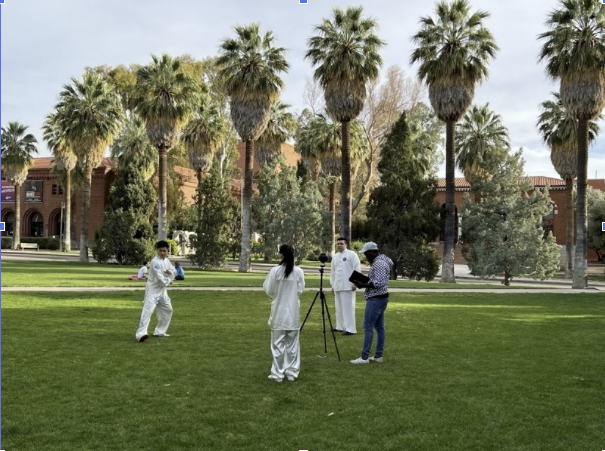The Wearable Sensors and Virtual Reality for Tai Chi and Qigong Intervention Research (We Sense Tai Chi): Feasibility Study
Keywords:
tai chi, health, qi gong, wearable sensors, older adults, virtual reality, videoAbstract
Tai Chi and Qigong (TCQ) interventions as mind-body exercise have increasingly demonstrated a spectrum of health benefits, but few were assessed using objective measurements, such as wearable sensors. In addition, Tai Chi instruction provided with live online and recorded videos increases accessibility but has some challenges. For example, participants can only see Tai Chi movements in two dimensions when watching a video compared to three dimensions when participating in an in-person class. There is also a limited experience of being part of a group when the Tai Chi classes are viewed online. Virtual reality has the potential to improve the experience of recorded Tai Chi classes, but Tai Chi research has not yet used this technology. The current study examined the feasibility and acceptability of using wearable sensors and virtual reality (VR) videos to deliver a remotely delivered TCQ intervention for older adults. This 2-week feasibility study enrolled 16 participants who were 50 years or older. Half of them had practiced Tai Chi for over one year and the other half had never learned Tai Chi before enrolling in the study. Participants were instructed to join the TCQ intervention classes and wear sensors at home to measure their sleep and heart rate variability. All participants had a 2-hour in-person group training on how to use wearable sensors and VR headsets and completed a set of questionnaires at both the pre-intervention and post-intervention time points. The questionnaires asked for demographic information, general health, perceived stress, physical activity, and sleep quality. Focus groups were conducted to obtain a deeper understanding of the participants’ experiences using the wearable sensors and VR for the TCQ intervention. Descriptive analyses were conducted for the feasibility of using wearable sensors and VR and completing the assessments. The completion rate for all the questionnaires and focus group interviews was 100%. The results showed that older adults had high acceptance of using wearable sensors and VR headsets for TCQ intervention, and high satisfaction with participating in the study (14 out of the 16 participants feel positive or very positive). However, over one-third of the participants had some level of difficulty using sensors and VR videos. In conclusion, we found high acceptability and good feasibility of using wearable sensors and VR for TCQ intervention. Our results suggest that more training and consultations are needed to help older adults effectively use wearable sensors and VR in an intervention study.

Published
How to Cite
Issue
Section
Copyright (c) 2024 Zhao Chen, Nicole P. Yuan, Ruth E. Taylor-Piliae, Melfanie Rubio, Yunjia Yang, Ashleigh L. Horton, Dagoberto Robles, Raymond Valenzuela, Chengcheng Hu, Janet Roveda, Phillip H. Kuo

This work is licensed under a Creative Commons Attribution-NonCommercial-NoDerivatives 4.0 International License.

